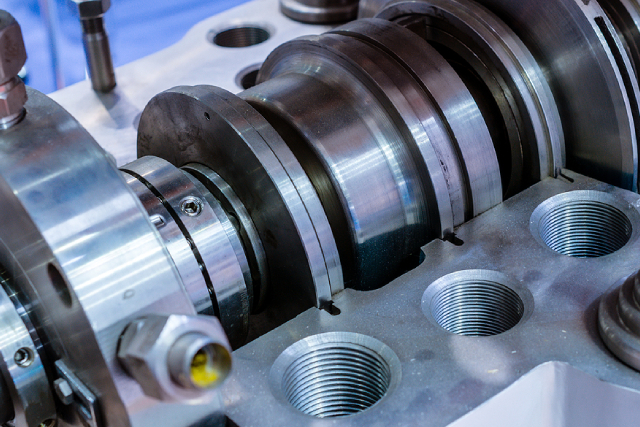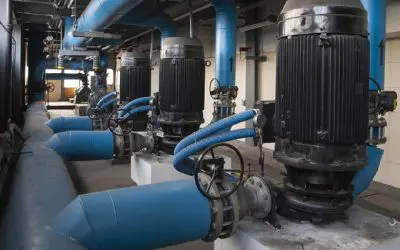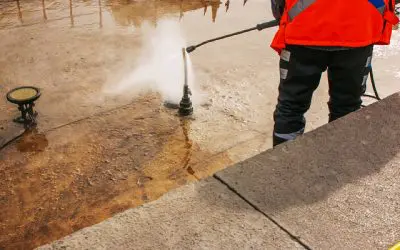
In today’s demanding industrial landscapes, equipment reliability is both a matter of convenience and a cornerstone of productivity and operational continuity. Pumps, in particular, serve as the vital core of countless processes, from irrigation in agriculture to critical fluid transfer in marine, petrochemical, and manufacturing sectors. The failure of a single pump can halt entire operations, resulting in costly delays, emergency repairs, and reputational damage.
Proactive pump management bridges the gap between reactive problem-solving and long-term operational excellence. Rather than waiting for problems to arise, operators and businesses that adopt pre-emptive measures can safeguard equipment performance, lower total cost of ownership, and extend the service life of their machinery. For instance, in industries that rely on a marine pump in Singapore, such as shipping or offshore oil and gas, proactive strategies can mean the difference between smooth sailing and catastrophic downtime.
This article explores the philosophy, practices, and technologies behind pre-emptive pump management, highlighting why preventive measures are not just good practice, but essential for modern operations.
What is Preventive Maintenance for Pumps?
Preventive maintenance (PM) represents a shift in mindset: from firefighting unexpected failures to strategically managing equipment health. Instead of reacting to breakdowns, preventive maintenance identifies and addresses potential issues before they escalate. This approach enables maintenance activities to be performed during planned downtime, ensuring operational schedules remain intact.
The economic argument is equally compelling. The cost of preventing failure is almost always lower than the cost of emergency repairs, which often include labour surcharges, unplanned parts procurement, and lost production time. Many organisations report that preventive programmes pay for themselves within the first year through reduced breakdown frequency and extended equipment life.
Pump reliability improves dramatically when operators focus on wear trends, lubrication requirements, and timely component replacement. By addressing these factors systematically, operators can prevent small issues from snowballing into expensive, large-scale repairs or complete equipment replacements. The result is improved performance stability, lower operational risks, and a longer service life for pumps.
Predictable maintenance schedules also streamline resource planning and inventory management. Operations can schedule around known maintenance windows, rather than scrambling during sudden downtimes. This level of control helps businesses maintain commitments to clients and partners without disruption.
Core Pillars of Preventive Pump Maintenance
1. Systematic Inspection and Monitoring Programmes
Inspection and monitoring form the bedrock of preventive maintenance. A structured inspection schedule ensures that each component is assessed at consistent intervals, while performance monitoring, particularly predictive monitoring, highlights shifts in operating conditions that may indicate underlying issues.
Parameters such as flow rate, discharge pressure, energy consumption, and operating temperature provide valuable insight into pump health. Even slight deviations may suggest early signs of wear, blockage, or imbalance. Early detection allows corrective measures to be implemented during scheduled downtime, avoiding costly emergencies.
Component wear tracking is equally important. Understanding typical wear patterns enables operators to replace seals, bearings, and impellers before failure occurs. This proactive approach not only minimises downtime but also supports efficient spare parts management, as inventory can be maintained at optimal levels.
2. Lubrication Management and Analysis
Proper lubrication is essential for minimising friction, preventing overheating, and reducing wear in pumps. A well-designed lubrication programme considers pump type, operating intensity, and environmental conditions. For example, heavy-duty industrial pumps or screw compressors that handle viscous fluids require more frequent lubrication checks compared with equipment operating under lighter loads.
Oil analysis enhances this process by offering detailed insight into both lubricant quality and equipment health. Regular oil sampling can detect contamination, oxidation, and microscopic wear particles long before visible issues arise. This data-driven approach allows maintenance teams to adjust lubrication schedules, swap oils, or replace components with precision.
Furthermore, tailoring lubrication schedules to specific environments, such as marine or offshore applications where exposure to moisture and salt is common, ensures pumps remain protected under the harshest conditions.
3. Fuel System Management and Quality Control
In pumps with fuel-driven engines, the quality of fuel is a decisive factor in reliability. Contaminated or degraded fuel can cause clogging, erratic performance, and long-term component damage. Implementing strict quality control measures, such as regular fuel testing, tank cleaning, and filter replacement, can prevent such problems.
Proper storage practices, including sealed containers, scheduled fuel rotation, and contamination prevention, help ensure fuel quality remains intact. Additionally, routine inspection of lines, carburettors, and injectors keeps systems clean and efficient. For businesses that operate pumps in remote or offshore settings, reliable fuel management is often the difference between seamless operations and mission-critical failure.
4. Training and Competency Development
Even the best maintenance strategies falter without skilled operators. Training programmes equip staff with the knowledge to operate pumps correctly, detect early warning signs, and carry out routine maintenance tasks.
Competency development reduces reliance on external service providers for routine activities, allowing operators to perform lubrication, filter changes, and belt adjustments independently. It also enables informed decision-making on when professional intervention is required.
Equally important is the practice of documentation. Maintenance logs capture valuable data on equipment performance, recurring issues, and parts replacement history. Such records not only support warranty claims but also guide future purchasing and operational decisions.
5. Parts Inventory and Supply Chain Management
A well-planned spare parts inventory ensures critical components are always available when needed. Extended downtime often occurs not because of the failure itself, but because replacement parts must be ordered and delivered. Strategic inventory management balances cost considerations with the need for rapid availability.
Critical spares typically include seals, bearings, impellers, filters, and belts. For specialised equipment, having unique spare components on hand is vital, as sourcing them can take longer than standard parts.
Building strong supplier relationships further supports this pillar. Reliable suppliers can offer expedited delivery, technical guidance, and quality assurance, reducing risks associated with procurement delays.
6. Technology Integration
Technology is transforming pump maintenance, offering unprecedented levels of monitoring and predictive insight. Modern digital platforms can track operating hours, performance parameters, and even automatically generate maintenance reminders. These systems reduce administrative burden while ensuring no maintenance activity is overlooked.
Predictive maintenance technologies take this a step further by using advanced analytics to forecast potential failures. Data from vibration sensors, thermal imaging, and pressure monitoring can reveal subtle patterns that precede component breakdowns. By addressing these issues early, operators can avoid unnecessary downtime and allocate maintenance resources more efficiently.
Conclusion
Proactive pump management is more than an operational strategy, it is an investment in reliability, efficiency, and resilience. By adopting preventive maintenance practices, organisations can reduce downtime, extend equipment life, and improve cost efficiency.
The pillars of inspection, lubrication, fuel management, training, inventory planning, and technology integration work together to create a robust framework that supports uninterrupted operations. In an era where even brief disruptions can have significant financial and reputational consequences, a forward-thinking approach to pump management ensures that equipment continues to deliver dependable performance across industries and environments.



